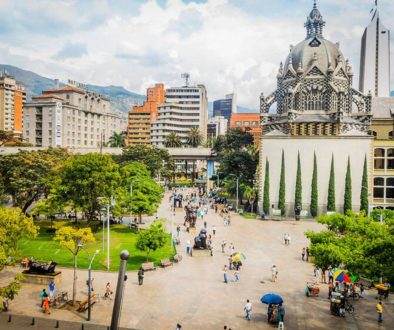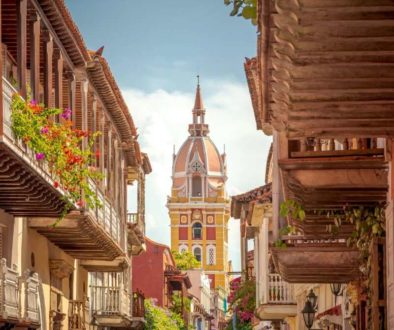Medellin, Colombia: How ‘the most dangerous city on Earth’ got a makeover
Traditionally, Colombia’s second city had a reputation as a savvy and entrepreneurial place. But in the 1980s and 90s those business smarts made Medellin the leading supplier for America’s cocaine habit. At the head of its drug operations was Pablo Escobar, king of cocaine lords, who would eventually be gunned down by American-funded paramilitaries on a Medellin rooftop in 1993. It was also one of the front lines in the battle between the government and FARC, Colombia’s guerrilla movement. Medellin became the world’s murder capital.
So many people in this city have suffered, and Julian was one of them. His father had been left close to death in a shooting when Julian was 8. Several of his closest friends never made it to adulthood. There were moments when he talked of his own experiences, of the friends he had lost, when he needed to stop and compose himself. Tears were never far away.
Medellin’s pain has its own monument – the Casa de la Memoria, the House of Memories. On the interactive walls are digital timelines with documents, newspaper reports, and film clips. Most moving of all are the dignified video testimonies of people’s experiences, of years spent searching for lost sons and husbands, of time spent fighting for the return of a box of ashes. It was the sheer scale of the suffering eventually that drove ordinary people to reclaim their city from the guerrillas and the drug lords.
Medellin’s transformation, of course, is part of a larger national revival. After decades of civil war, Colombia has been born again.
Young people who went overseas for education and for work in the bad years have come home in droves, bearing an international sophistication and an entrepreneurial energy. But in Medellin – where public projects helped instil a sense of pride and where ordinary private individuals simply turned their backs on the old ways – the renaissance has been more dramatic than anywhere else in the country.
Today, Medellin feels newborn. It helps that the setting is gorgeous. The city lies in a long valley between two Andean mountain ridges. Capital of Antioquia province, a fertile region famous for its coffee plantations and its flower farms, for its orchids and butterflies, it is known as the City of Eternal Spring for its idyllic climate.
Everywhere you turn there seem to be new things happening. I was wowed by the wide modern esplanades of the Parque de los Desos, the Park of Wishes, like an upgrade of London’s South Bank Centre with cafes and restaurants, lively concert halls and an interactive museum, the city’s university, a modern library and an open-air cinema.



